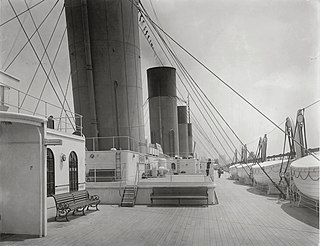Related Research Articles

Burrhus Frederic Skinner was an American psychologist, behaviourist, author, inventor, and social philosopher. He was a professor of psychology at Harvard University from 1958 until his retirement in 1974.

Vitiligo is a long-term skin condition characterized by patches of the skin losing their pigment. The patches of skin affected become white and usually have sharp margins. The hair from the skin may also become white. The inside of the mouth and nose may also be involved. Typically both sides of the body are affected. Often the patches begin on areas of skin that are exposed to the sun. It is more noticeable in people with dark skin. Vitiligo may result in psychological stress and those affected may be stigmatized.

Winemaking or vinification is the production of wine, starting with the selection of the fruit, its fermentation into alcohol, and the bottling of the finished liquid. The history of wine-making stretches over millennia. The science of wine and winemaking is known as oenology. A winemaker may also be called a vintner. The growing of grapes is viticulture and there are many varieties of grapes.

Erythema is redness of the skin or mucous membranes, caused by hyperemia in superficial capillaries. It occurs with any skin injury, infection, or inflammation. Examples of erythema not associated with pathology include nervous blushes.

Basal-cell carcinoma (BCC), also known as basal-cell cancer, is the most common type of skin cancer. It often appears as a painless raised area of skin, which may be shiny with small blood vessels running over it. It may also present as a raised area with ulceration. Basal-cell cancer grows slowly and can damage the tissue around it, but it is unlikely to spread to distant areas or result in death.

Melanoma, also redundantly known as malignant melanoma, is a type of skin cancer that develops from the pigment-producing cells known as melanocytes. Melanomas typically occur in the skin but may rarely occur in the mouth, intestines or eye. In women, they most commonly occur on the legs, while in men they most commonly occur on the back. About 25% of melanomas develop from moles. Changes in a mole that can indicate melanoma include an increase in size, irregular edges, change in color, itchiness or skin breakdown.

The dermis or corium is a layer of skin between the epidermis and subcutaneous tissues, that primarily consists of dense irregular connective tissue and cushions the body from stress and strain. It is divided into two layers, the superficial area adjacent to the epidermis called the papillary region and a deep thicker area known as the reticular dermis. The dermis is tightly connected to the epidermis through a basement membrane. Structural components of the dermis are collagen, elastic fibers, and extrafibrillar matrix. It also contains mechanoreceptors that provide the sense of touch and thermoreceptors that provide the sense of heat. In addition, hair follicles, sweat glands, sebaceous glands, apocrine glands, lymphatic vessels, nerves and blood vessels are present in the dermis. Those blood vessels provide nourishment and waste removal for both dermal and epidermal cells.

A skin condition, also known as cutaneous condition, is any medical condition that affects the integumentary system—the organ system that encloses the body and includes skin, hair, nails, and related muscle and glands. The major function of this system is as a barrier against the external environment.

A deck is a permanent covering over a compartment or a hull of a ship. On a boat or ship, the primary or upper deck is the horizontal structure that forms the "roof" of the hull, strengthening it and serving as the primary working surface. Vessels often have more than one level both within the hull and in the superstructure above the primary deck, similar to the floors of a multi-storey building, that are also referred to as decks, as are certain compartments and decks built over specific areas of the superstructure. Decks for some purposes have specific names.
Photosensitivity is the amount to which an object reacts upon receiving photons, especially visible light. In medicine, the term is principally used for abnormal reactions of the skin, and two types are distinguished, photoallergy and phototoxicity. The photosensitive ganglion cells in the mammalian eye are a separate class of light-detecting cells from the photoreceptor cells that function in vision.
Carotenosis is a benign and reversible medical condition where an excess of dietary carotenoids results in orange discoloration of the outermost skin layer. The discoloration is most easily observed in light-skinned people and may be mistaken for jaundice. Carotenoids are lipid-soluble compounds that include alpha- and beta-carotene, beta-cryptoxanthin, lycopene, lutein, and zeaxanthin. The primary serum carotenoids are beta-carotene, lycopene, and lutein. Serum levels of carotenoids vary between region, ethnicity, and sex in the healthy population. All are absorbed by passive diffusion from the gastrointestinal tract and are then partially metabolized in the intestinal mucosa and liver to vitamin A. From there they are transported in the plasma into the peripheral tissues. Carotenoids are eliminated via sweat, sebum, urine, and gastrointestinal secretions. Carotenoids contribute to normal-appearing human skin color, and are a significant component of physiologic ultraviolet photoprotection.
Xerotic eczema is a form of eczema that is characterized by changes that occur when skin becomes abnormally dry, red, itchy, and cracked. It tends to occur more often during the winter and in dry conditions. The lower legs tend to be especially affected, although it is also known to appear in the underarm area.
Dermatophytids are fungus-free disseminated skin lesions resulting from induced sensitization in patients with ringworm infections.
Acne necrotica presents with a primary lesion that is a pruritic or painful erythematous follicular-based papule that develops central necrosis and crusting and heals with a varioliform scar.
Primary inoculation tuberculosis is a skin condition that develops at the site of inoculation of tubercle bacilli into a tuberculosis-free individual.
Primary cutaneous coccidioidomycosis is a skin condition caused by Coccidioides immitis following a definite history of inoculation or a colonized splinter found in the skin lesion.
Primary cutaneous aspergillosis is a rare skin condition most often occurring at the site of intravenous cannulas in immunosuppressed patients.
Cutaneous actinomycosis is a chronic disease that affects the deep subcutaneous tissue of the skin. Caused by an anaerobic, Gram-positive, filamentous type of bacteria in the genus Actinomyces, invasion of the soft tissue leads to the formation of abnormal channels leading to the skin surface that discharge pale yellow sulfur granules.
Primary cutaneous marginal zone lymphomas represent a heterogeneous group of diseases characterized by solitary or multiple dermal or subcutaneous nodules. Lymphomas included in this group are:

Tuberculous gumma is a skin condition characterized histologically by massive necrosis. Restated, this is a skin condition that results from hematogenous dissemination of mycobacteria from a primary focus, resulting in firm, nontender erythematous nodules that soften, ulcerate, and form sinuses.
References
- ↑ James, William D.; Berger, Timothy G.; et al. (2006). Andrews' Diseases of the Skin: clinical Dermatology. Saunders Elsevier. ISBN 0-7216-2921-0.